Transportation
Transportation generates one-third of Princeton’s greenhouse gas emissions and is second to our building energy use. It is important to prioritize the most sustainable and efficient travel models, walking, biking, and public transit above car use to reduce environmental impact and improve mobility.
Walking
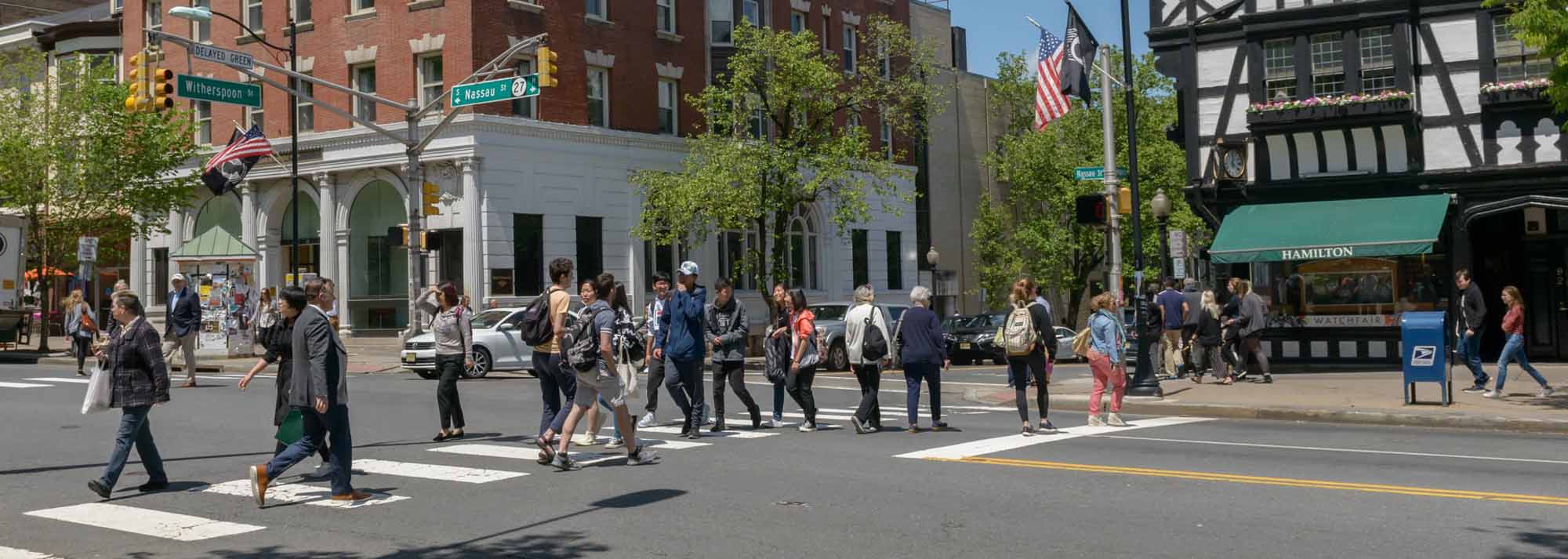
The benefits of walking are numerous: exercise, fresh air, less traffic, and savings on gasoline.
Here’s what you can do:
- Stay safe. Learn about pedestrian safety and the Street Smart campaign.
- Make it fun. Set up a walking school bus. Bring students together to help parents save time while kids have fun.
- Get exercise. Use a wrist tracker or smartphone app to monitor your progress. Did you know Sustainable Princeton hosts an annual walking challenge? Be sure to sign up for our newsletter to join the next one!
- Advocate for safety. Support efforts like the Safe Routes to School initiative, Complete Streets policies, and a Vision Zero model in your community. Want to get involved in Princeton? Join the Pedestrian and Bicycle Advisory Committee.
Biking and E-mobility
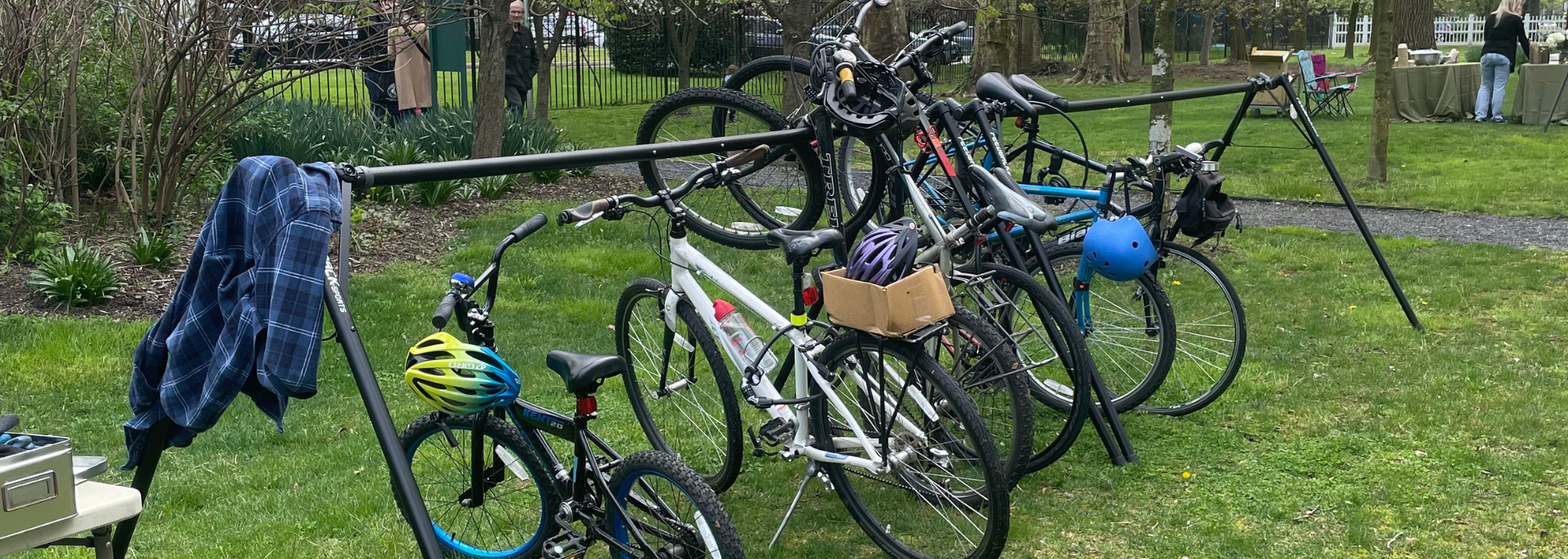
Ready to bike, but don’t know where to start?
- Register your bike with the Princeton Police.
- Find storage. Rent a bike locker at the Princeton Junction rail station.
- Lock it up. Take advantage of the bike racks popping up all over town.
- Take it with you. Your bike can travel on local public transportation.
- Explore new routes. Check out bike maps for the Municipality of Princeton, Princeton University, and Mercer County.
- Check out Princeton’s regulations for bikes and eMobility options.
Explore Electric Options
Electric bicycles, or e-bikes, come in a few different styles. Pedal-assist bikes provide extra power when you pedal, while throttle bicycles have a throttle that propels the bike forward. Combination e-bikes utilize both the throttle and pedal-assist modes.
According to New Jersey law, low-speed e-bikes — those with a motor less than 750 watts and a maximum speed of 20 mph — must follow the rules and regulations of traditional bikes.
In contrast, high-speed e-bikes — those that can achieve speeds between 20 and 28 mph — are considered motorized bicycles in New Jersey. As with gas-powered bicycles, these require a license, registration, and insurance.
In New Jersey, only low-speed electric scooters with a floorboard, handlebars, and a maximum speed of 19 mph, are permitted. As with low-speed e-bikes, these e-scooters must comply with the laws and regulations of traditional bikes.
Be safe Princeton!
Bikers, follow GMTMA’s advice:
- Be Seen: A front white light and rear backlight are essential and required.
- Be Heard: Let others know you’re approaching. Bells are required.
- Be Right: Ride in the same direction as traffic, as far to the right as practicable.
- Be Headstrong: It’s always smart to wear a helmet. Under 17, it’s required.
Public Transportation
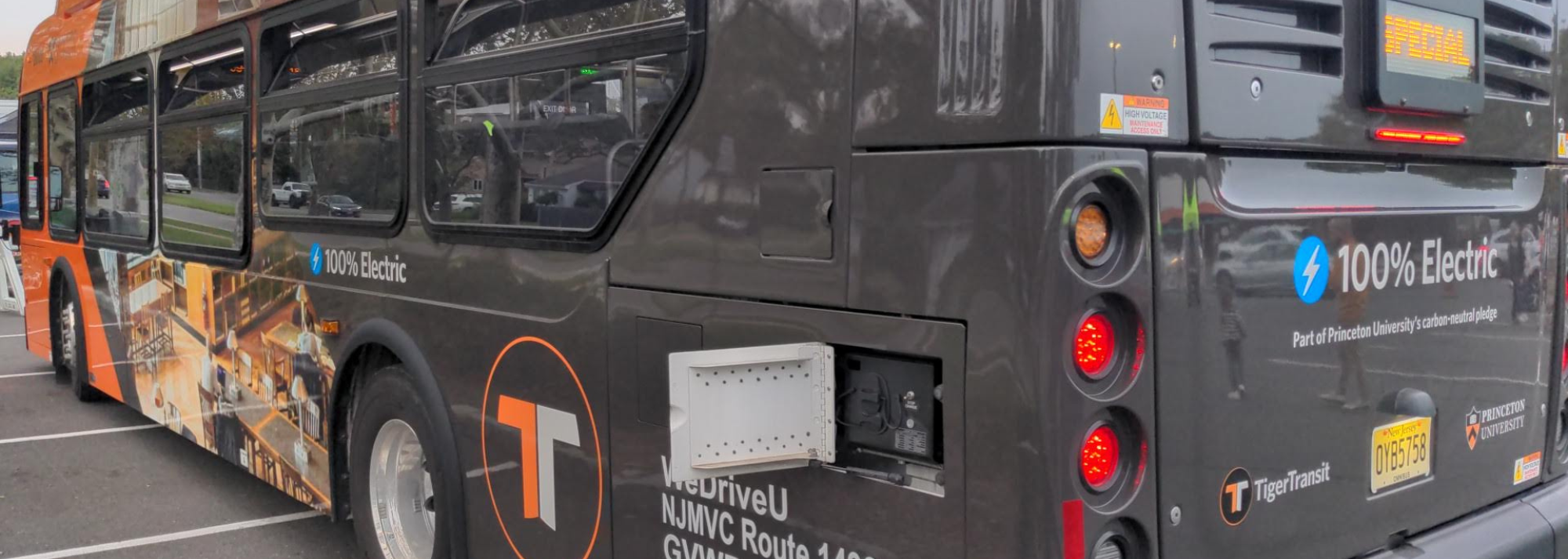
When it comes to public transportation, there are several choices in Princeton and a number of them are free.
Try a new bus route.
- The Princeton Muni Transit follows a path around Princeton Monday through Friday. Download the Tripshot app to get real-time location information.
- The Princeton University transit system, or TigerTransit, operates on a fixed route throughout the Princeton campus and surrounding community. Stops include certain Route 1 retail centers, as well as Forrestal Village. TigerTransit is free and open to the public.
- NJ TRANSIT offers two other lines that service our area. NJT Line 605 travels to Quakerbridge Mall, Mercer Mall, Nassau Park, Market Fair, Montgomery ShopRite, and Princeton Station. NJT Line 606 provides transport to Rider University, Hamilton Marketplace, downtown Trenton, and more.
- Coach USA/Suburban Transit Line 100 offers two lines to New York City and around Central New Jersey.
Take a train to your next destination.
- Hop on the NJ TRANSIT Princeton Branch line (a.k.a. the Dinky) at the Princeton Station on Alexander Street and get a ride to Princeton Junction in West Windsor.
- From Princeton Junction, travel the Northeast Corridor Line via NJ TRANSIT, Amtrak, or SEPTA regional rail.
Ride in style. Download an app to improve the bus experience.
- TransLoc Rider app provides real-time bus updates for TigerTransit and the freeB.
- NJ TRANSIT Mobile app allows you to buy tickets and get customized alerts.
- Megabus RIDE app offers free movies and TV shows.
- Curb your car. Take your bike on TigerTransit, freeB, and NJ TRANSIT. Make sure you are familiar with the bike rules for NJ TRANSIT.
First time on the train or bus? The Mercer County Mobility Guide can help.
Carsharing and Carpooling
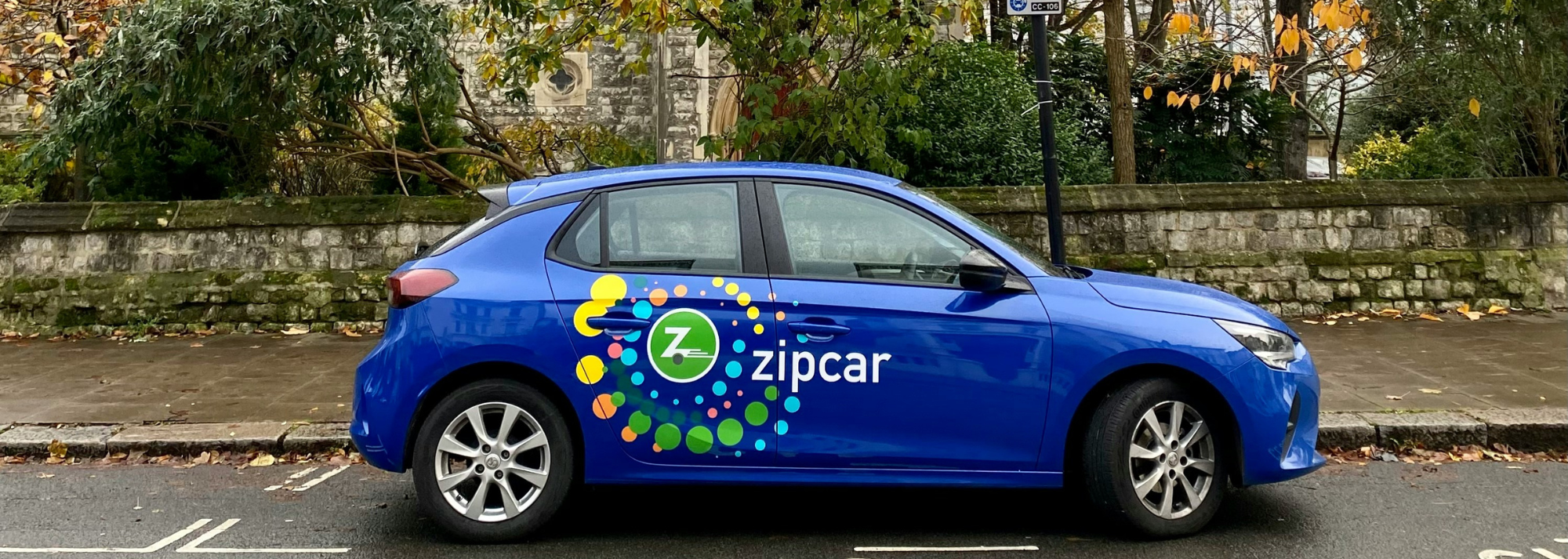
Car ownership is expensive, costing thousands of dollars per year for an item that sits empty most of the day. Imagine dropping that expense.
With a little ingenuity, it’s possible to live without a car payment in Princeton.
So, how’s it done? Welcome to the world of carsharing, carpooling, and ridesharing.
Carpooling helps break the traffic bottleneck.
- If you work in Central New Jersey, check out the Greater Mercer TMA’s RideShare carpooling program. This free matching service helps commuters find a suitable carpool or vanpool. The companion Emergency Ride Home program ensures that you have the flexibility to leave work early or stay late.
- Princeton University offers a similar carpool program to its employees, including a guaranteed ride home for any personal, family, or work emergencies.
- If neither of these options works for you, check with your employer and let them know about the commuter tax benefit — a great incentive for employers to assist your commute.
Ridesharing makes for a great backup plan and is now readily available in our area.
- Set up an account with Lyft or Uber and arrange a ride in minutes.
- Faculty, staff, and students at Princeton University also have access to an Enterprise CarShare program, which offers more than a dozen cars scattered around campus.
- Carsharing programs like Turo are making it easier to access a personal car on demand.
- Seniors check out all these transportation options!
Electric Vehicles
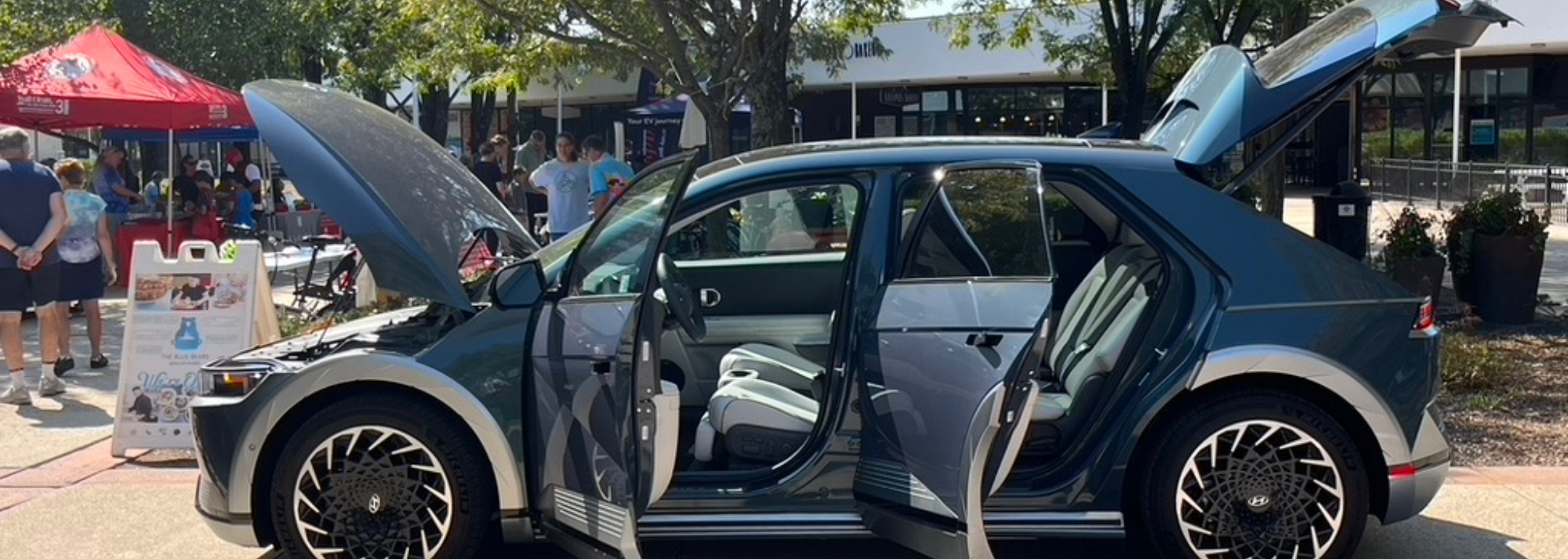
Switching to an electric vehicle (EV) is easier and more affordable than ever.
Choose an electric car.
- EVs have become more affordable. Plug In America and Destination Electric can help you search the more than 40 models available in our region and compare options.
- Fueling an EV is cheaper. Mile for mile, it’s cheaper to recharge an EV than refuel your tank. Use the ChargEVC EV savings calculator to estimate your commuting costs and compare gas costs vs electricity. The U.S. Department of Energy also has a tool at fueleconomy.gov to compare the environmental impacts and costs of various vehicles.
- Public charging is widely available in our region. There are more than 300 public charging locations in NJ, a list that is growing every year.
- EVs are cleaner. EVs have lower lifetime emissions than hybrid or gas-powered vehicles, even when accounting for battery manufacture emissions. The Alternative Fuels Data Center shows how this is especially true for New Jersey.
- Home charging is convenient. Those who charge at home get to skip the weekly trip to the gas station, as well as oil changes.
- EVs have perks. Not only are they fun to drive, but they are also eligible for numerous state and federal incentives, exempt from NJ sales tax, and don’t need NJ emissions tests.
If you are purchasing an EV check out this fact sheet and discussion guide that will help you choose the right vehicle.
English EV Fact sheet and discussion guide
Spanish EV Fact sheet and discussion guide
Find an EV charging station.
- Worried about finding a place to charge your car when traveling? There are a number of charging station websites and apps to help plan your trip such as PlugShare and A Better Routeplanner.
- There are currently 20 public EV charging stations in Princeton: eight at the Municipal building at 400 Witherspoon Street (including 1 ADA-accessible charging station), two at the Princeton Shopping Center, two at Spring Street Garage, and two at Palmer Square Garage. We are always working to bring more to the area. Check out the Plugshare map to find more locations.
Helpful Hints.
- Need help choosing a home charging station? ChargeHub has a guide to compare the most popular charging stations on the market.
- To get the most up-to-date information about federal and state tax credits and other incentives, check out Energy.Gov’s website.
Transit-Friendly Growth
Land use planning provides more people access to affordable and convenient transit options. This strategy improves air quality and reduces greenhouse gas emissions and traffic congestion.
Transit-friendly growth creates vibrant neighborhoods where people can live, shop, work, and play without relying on automobiles.
What is transit-friendly growth?
It is compact development built around a transit station or within walking distance of a station containing a mix of land uses such as housing, offices, shops, restaurants, and entertainment.
What are the benefits of transit-friendly growth?
- Lower household transportation costs
- Reduced greenhouse gas emissions and air pollution
- Increased safety of pedestrians and bicyclists due to narrower streets and decreased speeds
- Reduced need for parking spaces
- Increased economic vitality for the community
How to Help Support/ Advocate for a Transit-friendly Princeton
- Support walkable development close to goods and services
- Support reducing or eliminating parking minimums to prevent overbuilding parking
- Use bike lanes, bike boulevards, and public transit in Princeton
Remember, building housing for more people does not have to mean more cars on the road if we develop in a way that doesn’t force people to be car-dependent.




